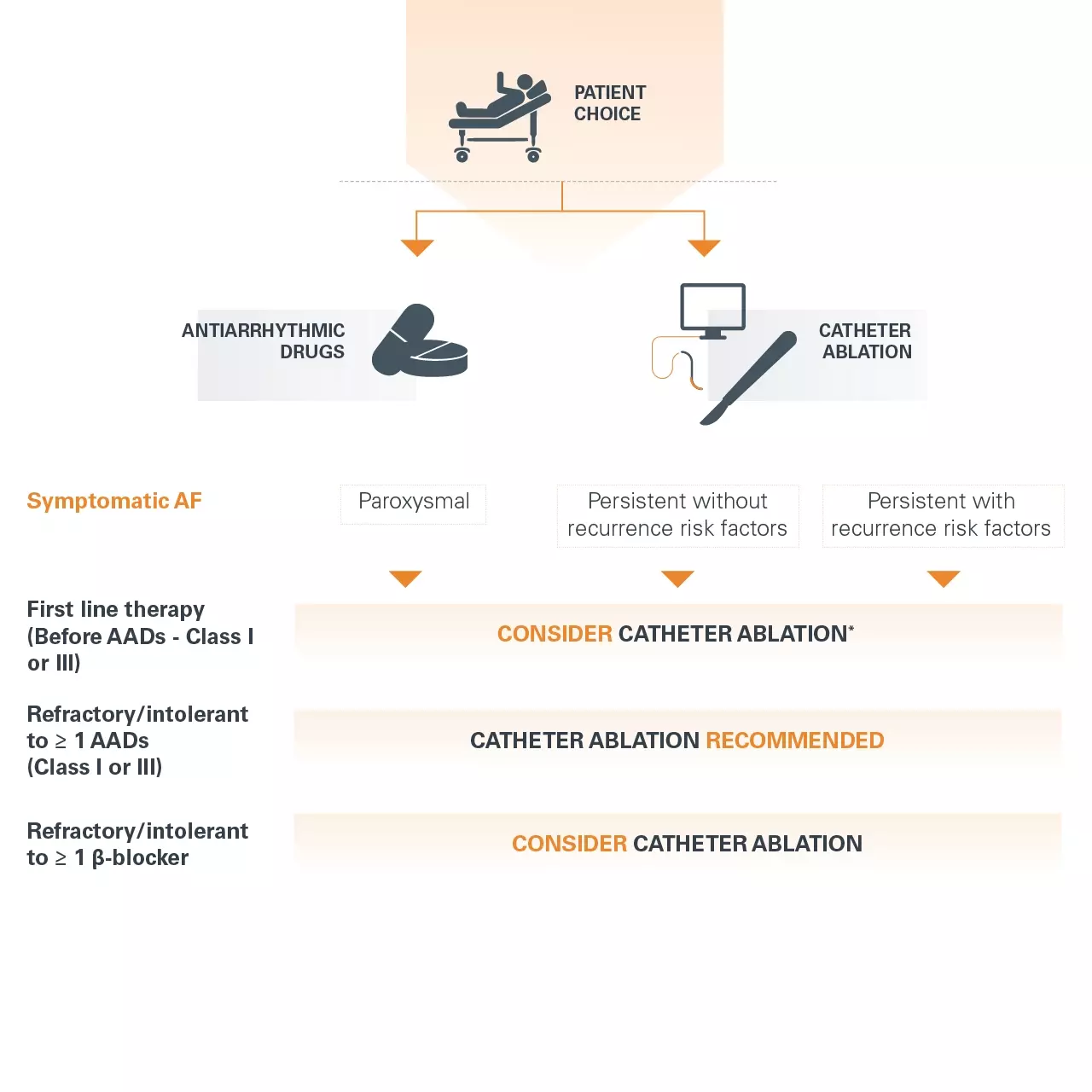You are about to leave the Get Smart about AFib website and go to an external website.
Click on the titles of the screens below to go from one screen to the next.
Integrated Management of AF & Collaborative Decision Making
Following the diagnosis of AF, guidelines recommend an integrated and structured approach to patient care and AF management that involves multidisciplinary teams of cardiologists and electrophysiologists, non-specialist healthcare professionals, and allied health professionals, and places patients and their carers in a central role in decision-making.3
Physicians are recommended to optimize shared decision making about specific AF treatment option(s) in consideration by:3
- Informing patient about advantages/ limitations and benefits/risks associated with options being considered
- Discussing potential burden of treatment with patient and include patient’s perspective of treatment burden in the treatment decision
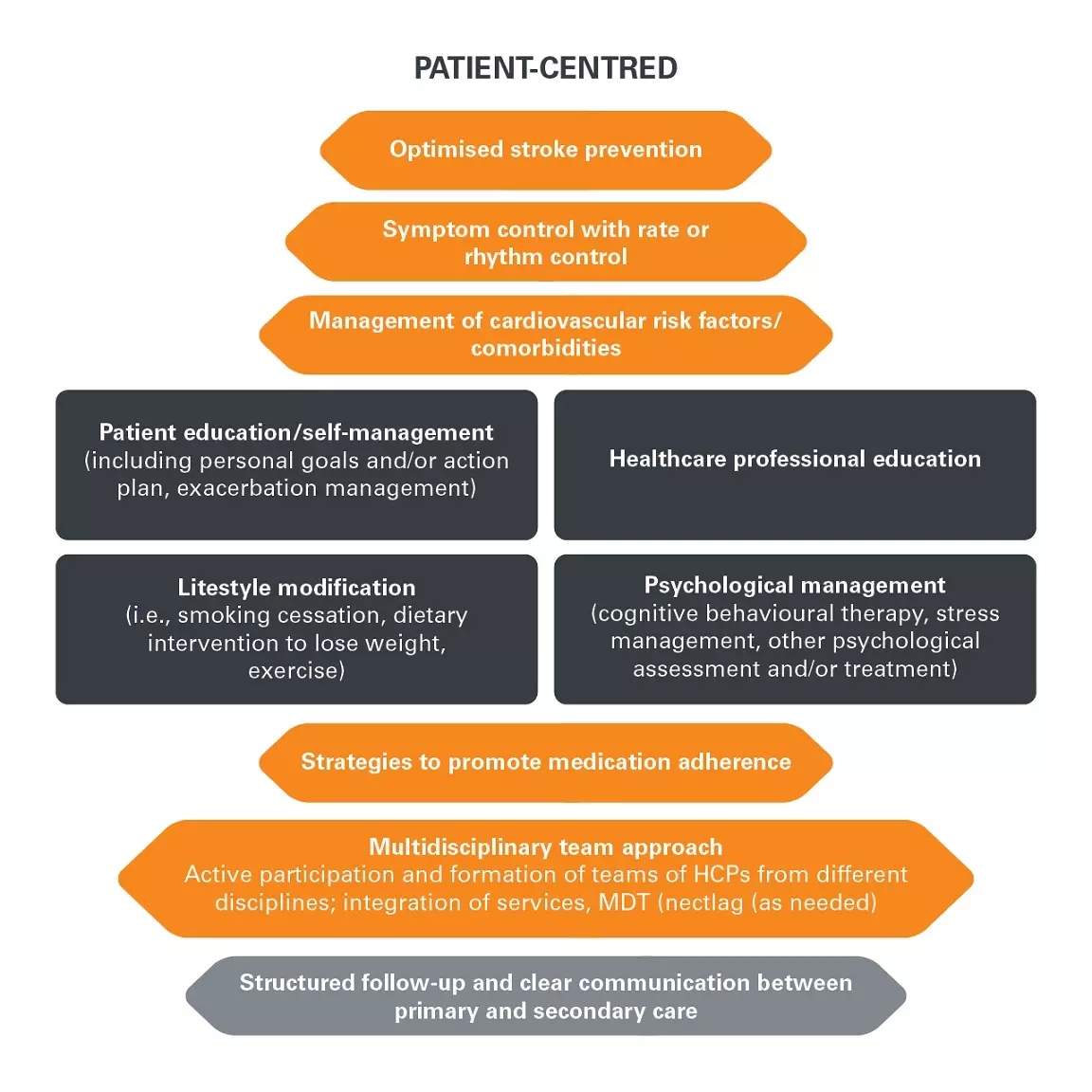
Click on the titles of the screens below to go from one screen to the next.
Oral Anticoagulation Therapy for Stroke Prevention in Patients with AF
Stroke risk assessment: keep it simple and practical
- Risk scores are simplifications to help decision-making
- All clinical risk scores have modest predictive value for identifying high risk patients
- The default is stroke prevention* unless ‘low risk’
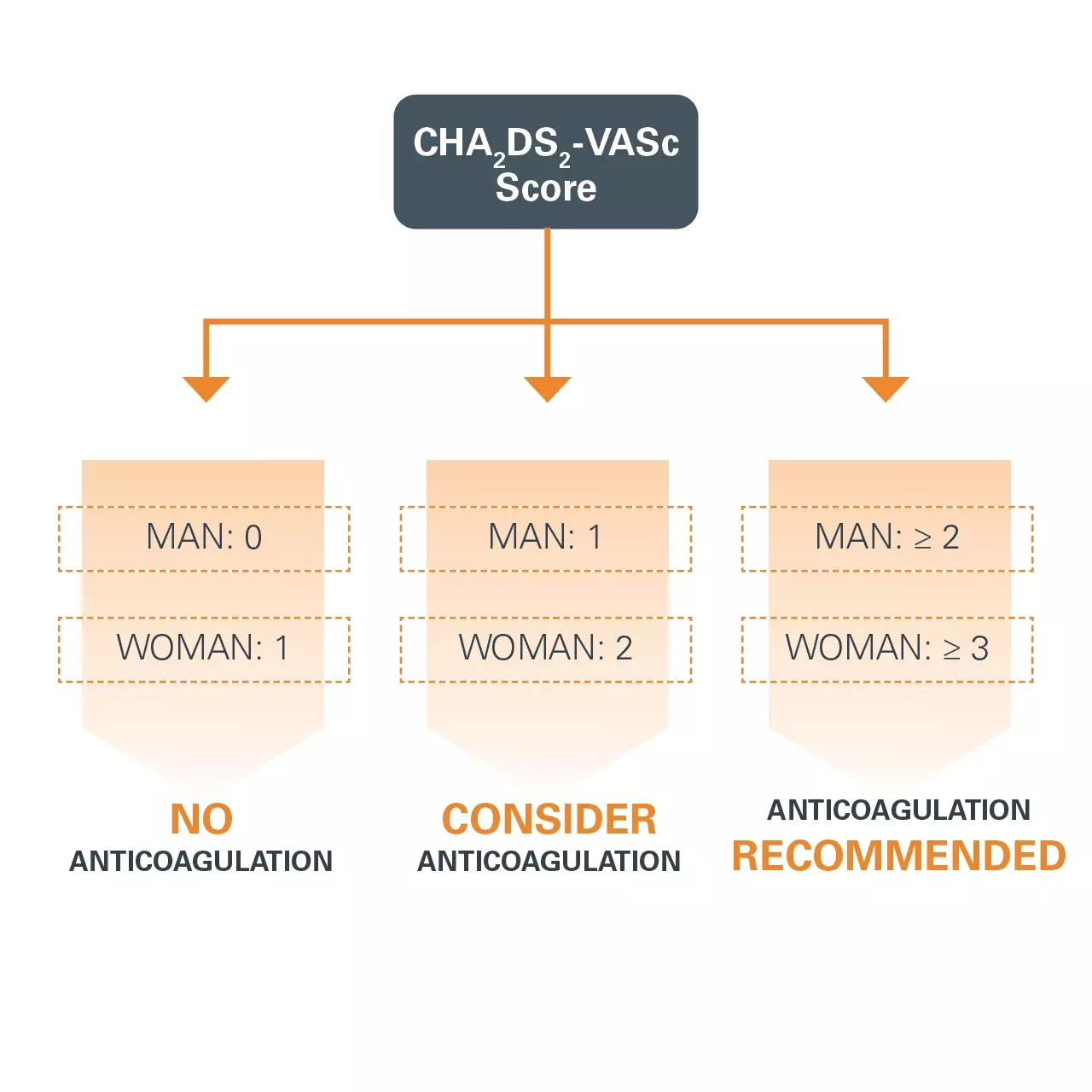
Click on the titles of the screens below to go from one screen to the next.
Rate Control Therapy to Lower and Control Heart Rate and Improve Symptoms of AF3
Rate control is an integral part of AF management, and is often sufficient to improve AF-related symptoms. Very little robust evidence exists to inform the best type and intensity of rate control treatment.
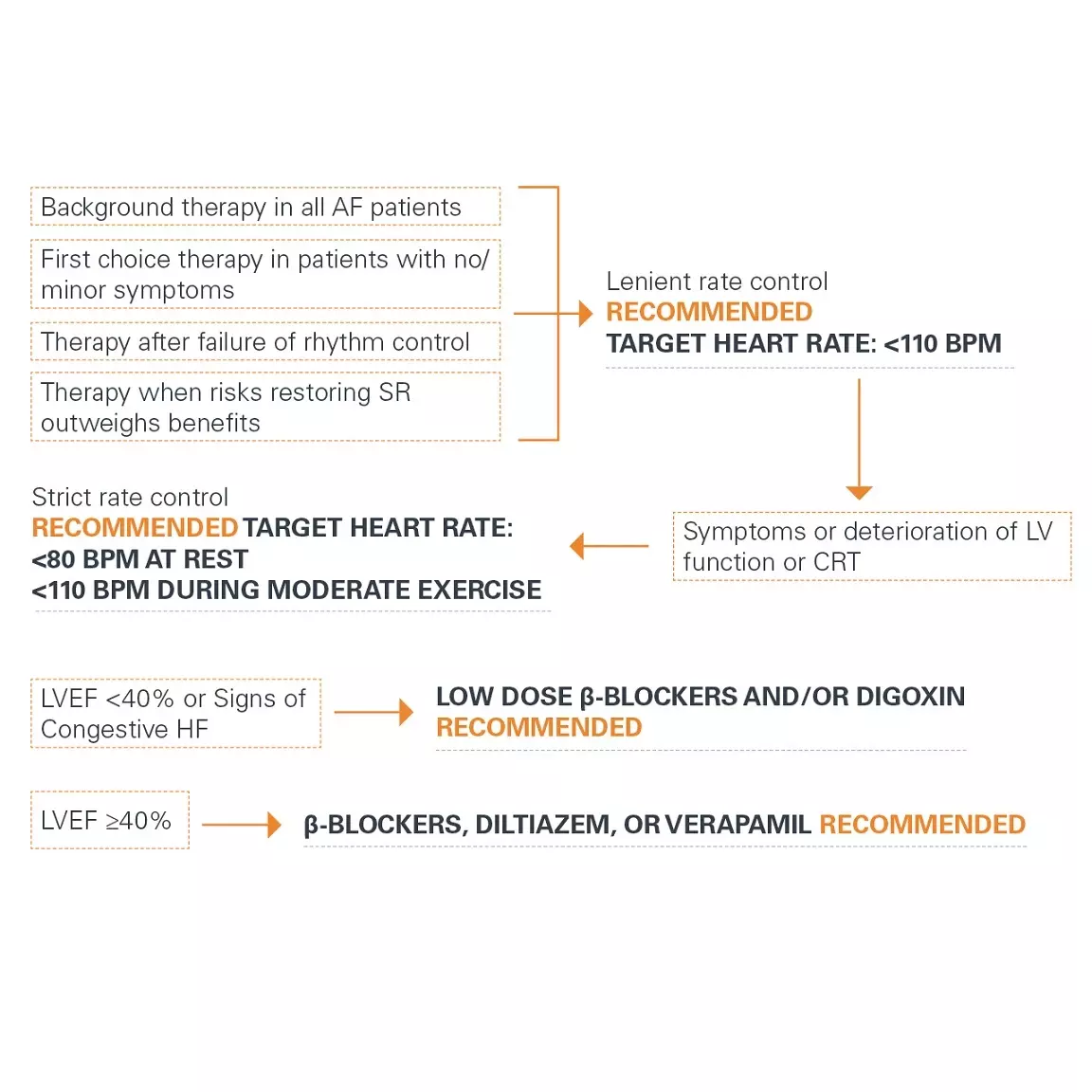
Click on the titles of the screens below to go from one screen to the next.
Acute Rhythm Control Therapy to Restore Normal Sinus Rhythm3
Acute rhythm control can be performed as an emergency cardioversion in a haemodynamically unstable AF patient or in a non-emergency situation.
Synchronized direct current electrical cardioversion is the preferred choice in haemodynamically compromised AF patients as it is more effective than pharmacological cardioversion and results in immediate restoration of sinus rhythm.
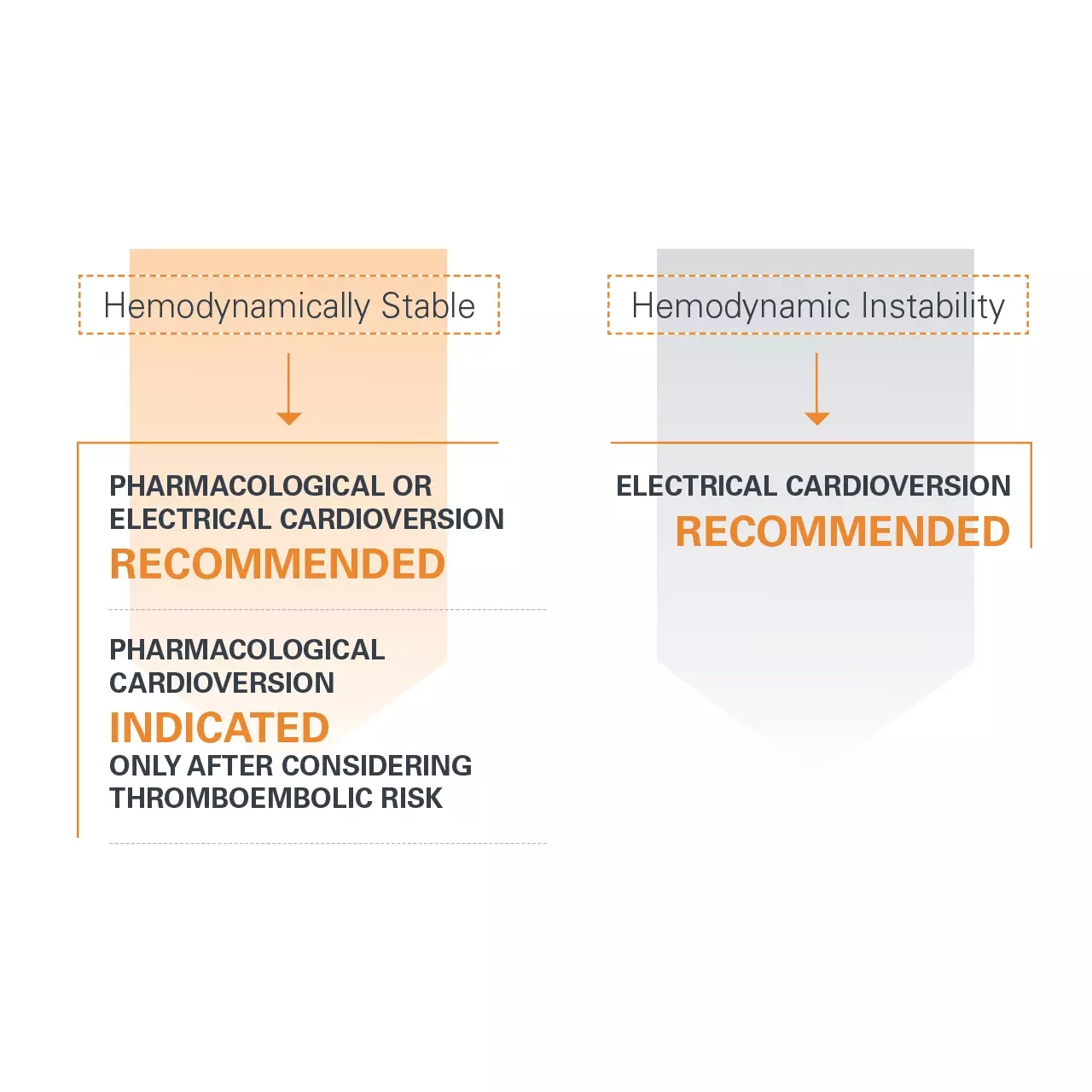
Click on the titles of the screens below to go from one screen to the next.
Rhythm Control Therapy for Reducing AF-related Symptoms and Improving Quality of Life3
- Guidelines recommend that decision to treat with AADs, catheter ablation, and/or surgical ablation include patient choice.2 3
- The choice of AADs needs to consider the presence of comorbidities, cardiovascular risk, potential for proarrhythmia, toxic effects, symptom burden, and patient preference.2
